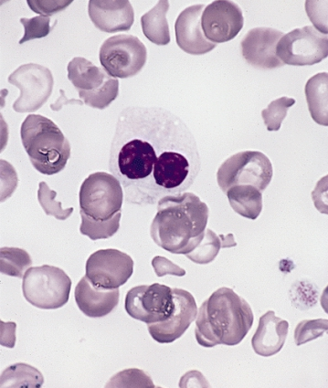FDA Gives Tamibarotene Fast Track Designation for High-Risk MDS
Tamibarotene is a first-in-class oral first-in-class selective retinoic acid receptor α agonist that is being evaluated in combination with azacitidine for newly diagnosed higher-risk myelodysplastic syndrome.
Tamibarotene has received fast track designation from the FDA for the treatment of patients with higher-risk myelodysplastic syndrome (MDS), according to a press release from Syros Pharmaceuticals.1
Due to its new designation, the development and review of tamibarotene, an oral first-in-class selective retinoic acid receptor α agonist, will be accelerated.
Investigators are assessing tamibarotene plus azacitidine in patients with high-risk MDS in the ongoing phase 3 SELECT-MDS-1 study (NCT04797780).

“Receipt of fast track designation for tamibarotene underscores both the potential of tamibarotene and the unmet need for [patients with higher-risk] MDS, who have a poor prognosis due to the progressive nature of the disease,” David A. Roth, MD, chief medical officer at Syros Pharmaceuticals, said in the press release. "No new therapies beyond hypomethylating agents have been approved since 2006, and approximately half of all patients diagnosed with high-risk MDS ultimately progress to AML. We are grateful for the opportunity to potentially expedite the delivery of tamibarotene as a new standard of care for this population."
Tamibarotene is currently being evaluated in combination with azacitidine (Vidaza) in a population of patients with RARA gene overexpressing as part of the phase 3 SELECT-MDS-1 study (NCT04797780).2 The randomized, double-blind, placebo-controlled study has an estimated enrollment of 190 patients and includes 75 clinical sites in 12 countries. Patient enrollment is anticipated to be complete by the fourth quarter of 2023, with data in the third quarter of 2024.
Patients on the trial will be treated with 6 mg of tamibarotene orally twice daily on days 8 to 28 of every 28-day cycle plus 75 mg/m2 of intravenous or subcutaneous azacitidine on days 1 to 7. The control arm will receive placebo and azacitidine.
The primary end point is complete remission (CR) and secondary end points include objective responses, event-free survival, overall survival, transfusion independence, duration of CR, and safety.
To enroll, patients need to be 18 years or older with RARA-positive newly diagnosed higher-risk MDS. Patients also need to have an ECOG performance status of 0 to 2.
Patients who are able and willing to receive an allogeneic hematopoietic stem cell transplant (HSCT) at the time of screening or who have been previously treated with a hypomethylating agent, chemotherapy, or allogeneic HSCT are not eligible for enrollment.
Additionally, tamibarotene is under investigation in combination with venetoclax (Venclexta) in patients who are unfit with newly diagnosed acute myeloid leukemia and RARA overexpression as part of the phase 2 SELECT-AML-1 study (NCT04905407). Initial data for the study are expected for the fourth quarter of 2023, with additional data due to read out in 2024.
The study has an estimated enrollment of 95 patients who will be treated with 75 mg/m2 of azacitidine intravenously once daily on days 1 to 7 of every 28-day cycle; oral venetoclax daily at 100 mg on day 1, 200 mg on day 2, and 400 mg on day 3 and beyond; and 6 mg of tamibarotene daily on days 8 to 28 of every 28-day cycle in part 1. The regimen will be compared against venetoclax and azacitidine.
References
- Syros receives fast track designation from the FDA for tamibarotene for the treatment of higher-risk myelodysplastic syndrome. News release. Syros Pharmaceuticals. January 26, 2023. Accessed January 26, 2023. http://bit.ly/3jbw86A
- Dezern AE, Marconi G, Deeren D, et al. A randomized, double-blind, placebo-controlled study of tamibarotene/azacitidine versus placebo/azacitidine in newly diagnosed adult patients selected for RARA+ HR-MDS (SELECT-MDS-1). J Clin Oncol. Published online June 2, 2022. doi: 10.1200/JCO.2022.40.16_suppl.TPS7075
Newsletter
Stay up to date on recent advances in the multidisciplinary approach to cancer.